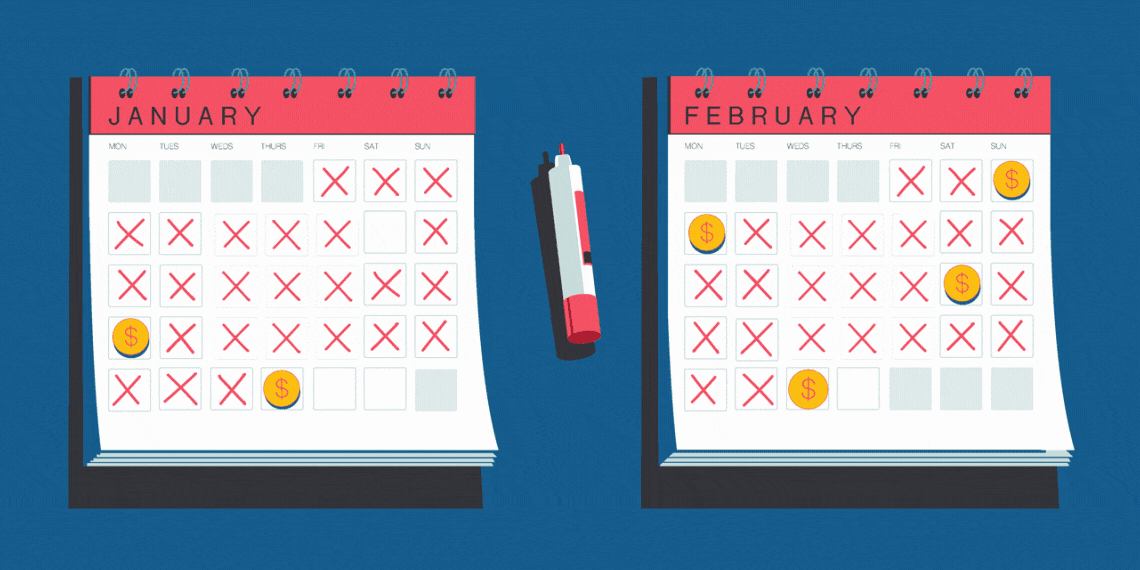
The pandemic threw a lot of our lives into disarray—especially when it comes to retirement. It’s propelled some 2.7 million wealthy Americans ages 55 and older to think about retiring early; at the same time, it’s pushed about a third of Americans to retire later than they expected. And only 36% of Americans feel like they’re on track with their retirement savings.
How far off track are they? And how far off track are you? Do you know how much you should be stashing away each month to hit your financial goal for retirement? Of course, that depends on a number of factors, some of which—such as how long you’ll live—are unknown. Other factors, such as the rate of return on your money, will vary over time. In other words, there’s no magic number for what your retirement savings should amount to; your own goals and current financial situation will determine how much to save.
However, there are some general rules around retirement savings that can guide you. One number to remember: 25. A solid standard is that in order to retire, you should have saved 25 times more than you’ll need in an average year of retirement. (This assumes that you’ll draw down 4% of your savings each year—another good general rule to keep in mind.)
Taking all of the above into consideration, retirement savings becomes a complicated calculus. That’s exactly why we built a retirement savings calculator—so you can quickly and easily get a sense for how much money to set aside each month in order to meet your goals. Just input five pieces of information—your age, amount saved, expected annual return, expenses per month in retirement and desired retirement age—and the calculator lets you know if you’re on track. If you need to increase your monthly savings rate, it will give you a sense of how much you should save.
Here’s an overview of how you should be thinking about your monthly savings goals, based on how the calculator works.
Dream Big: When Do You Want to Retire?
Start by figuring out how many months you have until you reach your ideal retirement age. Subtract your current age from the age you want to review, then multiply that number by 12 to figure out how many months you have before retiring.
So if you are 32 years old, and you want to retire at age 65, the calculator will compute: (65 – 32) x 12 months = 396 months. In this scenario, you would have nearly 400 months to save for retirement.
Pull Some Numbers: How Much Have You Saved?
Begin this process by figuring out how much you’ve saved so far. Remember, that amount will grow over time as your interest on savings compounds and your investments grow.
How do you know how much they will grow? It depends, since different types of savings provide different levels of return. High yield savings accounts have variable rates and may give you as much as 2% on average over time, for example, while the stock market has historically returned an average of 6% per year (though stocks and other investments come with more risk attached). For your calculators, pick a number close to the return on your preferred investments.
While the calculations for rate of return can get complicated, you can easily see how your savings will grow over time by adjusting the “expected annual rate of return” on our retirement calculator.
Assess the Future: What Will You Spend in Retirement?
Take this in two steps. First, outline what you spend now for your “needs”—include housing, food and other necessities—and your “wants,” such as entertainment and travel. If you don’t currently have a budget, now is a great time to create one—or at least to analyze the last few months of your spending.
The next step is to consider if and how your budget will change in retirement. For example, will you downsize your house or pay off the mortgage? Will you cut spending on commuting? Will you spend more on travel? You can’t predict everything, of course, but take a stab at a monthly budget based on your goals and lifestyle.
Make a Plan: Reassess Regularly
These are the factors that are essential: your age, your retirement age, how many months you have to save, how much you currently have saved and how much you’ll need in retirement. It almost seems too simple, right?
Revisiting your numbers regularly can be an invaluable opportunity to take stock in your retirement savings progress and help you get a sense of whether you need to adjust your savings plan. Use our savings calculator to play around with your details and watch as the output changes in real time. Behind the scenes, a fairly complex formula is busy crunching the numbers for you, taking into account all of the factors you enter, including your 25x number and the annual percentage yield on your interest rate.
You’ll end up with a good snapshot of where you are today. Just remember that your current situation is likely to change over time, as your goals and plans evolve. So bookmark the calculator and revisit it regularly to check your progress.
Rich Beattie is a former executive digital editor of Travel + Leisure and has written for outlets such as The New York Times, Popular Science, New York Magazine and SKI.
As you prepare for retirement, you’ll likely be thinking of ways to improve your home space. Since many retirees become empty nesters around the same time, it’s also important to think about some of the ways to repurpose your home space when that time comes. Read on to learn more about how to create great rooms at every stage.

